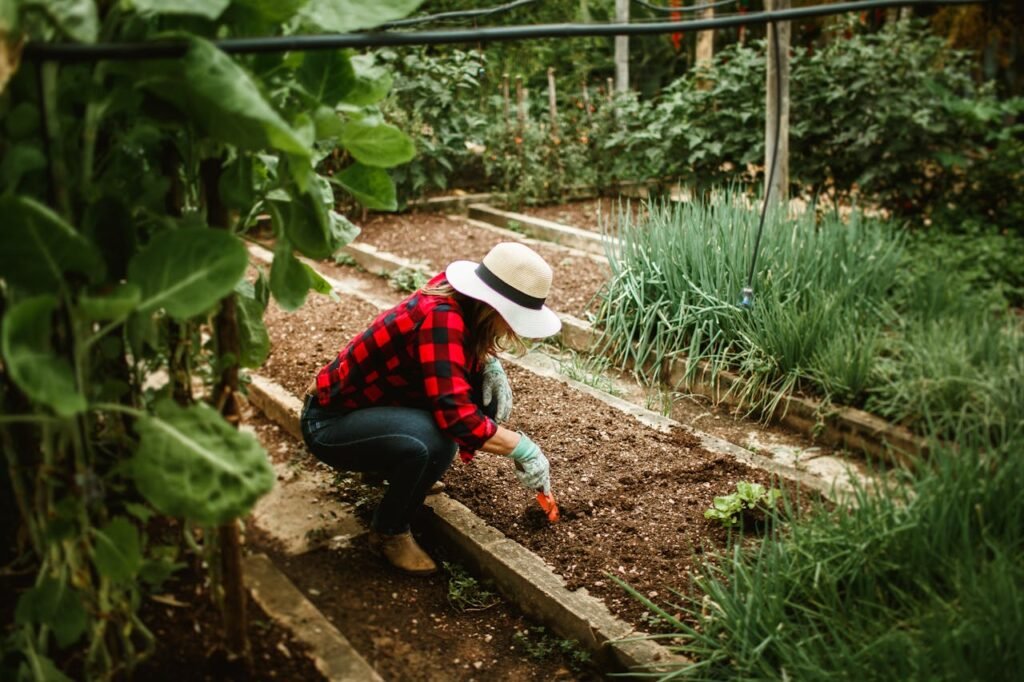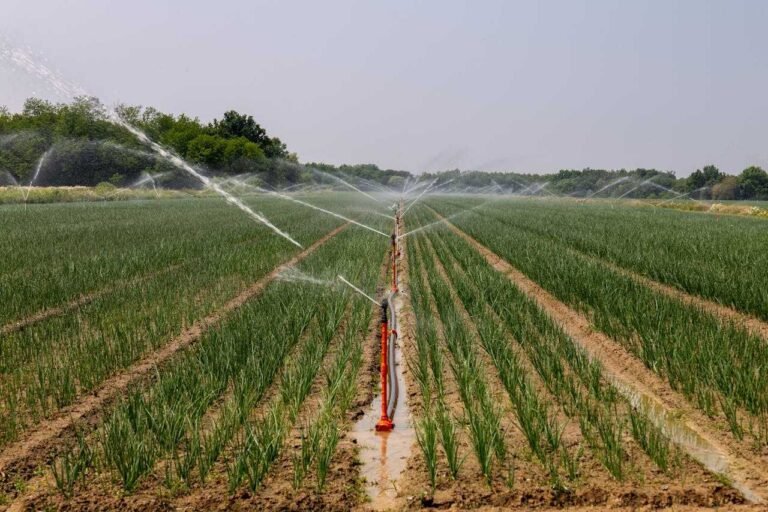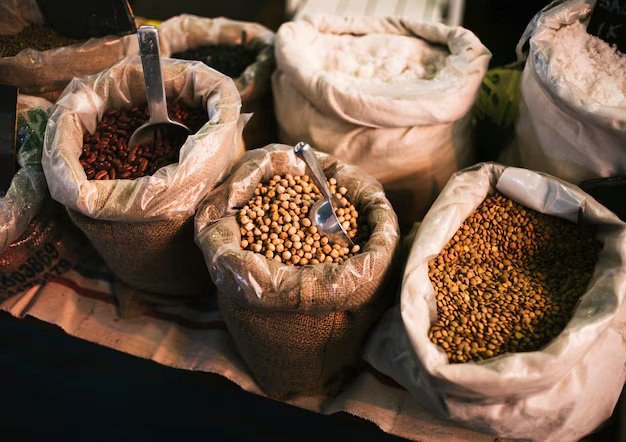Permaculture: Definition, Principles & Examples
Permaculture isn’t just a farming method—it’s a transformative framework that reimagines how we live within ecosystems. Rooted in the symbiotic wisdom of natural systems, permaculture blends thoughtful observation with creative design to cultivate environments that nourish people, regenerate the land, and foster community. Moving beyond short-term efficiency, it prioritises ecological resilience, ethical resource use, and equitable sharing. Whether on a small urban balcony or sprawling rural land, permaculture encourages us to act intentionally: harvesting energy, nurturing soil, and interweaving plants, water, and wildlife. In essence, it’s a practical, values-driven path toward flourishing landscapes and societies.

In This Article
- What Is Permaculture?
- The 12 Permaculture Principles
- Permaculture in Practice: Global Examples
- Permaculture and Climate Resilience
- Actionable Advice: Your Permaculture Roadmap
- Conclusion: Living the Permaculture Way
What Is Permaculture?
Permaculture is a way of seeing and living that mimics how nature cares for itself. It’s a design system created to produce food, shelter, energy, and community in ways that are not just sustainable, but regenerative. Bill Mollison and David Holmgren coined the term in 1978, blending “permanent agriculture” and “permanent culture” to express a philosophy that values long-lasting richness in both ecosystems and communities.
Officially, the Permaculture Research Institute describes it as “the conscious design and maintenance of agriculturally productive ecosystems which have the diversity, stability, and resilience of natural ecosystems.” That definition captures the technical side, but I think of permaculture as a mindset rooted in three core ethics:
- Care for Earth – keeping the soil, water, and all living beings healthy.
- Care for People – meeting human needs fairly and thoughtfully.
- Fair Share – consciously limiting what we take and sharing any surplus.
Studies have shown that permaculture farms often improve soil quality, stabilise carbon levels, and boost biodiversity compared to conventional farms. Projects like Saudi Arabia’s Al Baydha have even turned the desert into a green savanna using permaculture water techniques. So permaculture isn’t just theory—it’s a proven, real-world path to living well and caring for our planet.
The 12 Permaculture Principles
Permaculture’s twelve principles, originally introduced by David Holmgren, are not strict rules but nature-inspired patterns that guide sustainable design. Think of them as a gentle compass rather than a rigid roadmap—encouraging creativity, flexibility, and ecological wisdom.
1. Observe and Interact
Before planting a seed or building a wall, pause. Notice the sun’s paths, wind’s whispers, water’s flow, and life’s rhythms around you. This aligns with science-based “adaptive management,” where observing and adapting improve outcomes—vineyard yields and biodiversity benefit under such an approach.
2. Catch and Store Energy
Capture nature’s generosity—sunlight, rainfall, compost. Mulching boosts soil moisture and stability; on permaculture farms, it increases microbial life and crop resilience. Simple tools like rain barrels or solar panels amplify this principle.
3. Obtain a Yield
Everything you invest in your system should give back—food, radiance, health, and community. Beacon Food Forest in Seattle grows fruit for volunteers and fosters collective connection.
4. Apply Self‑Regulation and Accept Feedback
Nature isn’t perfect, and neither are we. By embracing mistakes and adjusting, we reinforce resilient systems, mirroring how ecosystems naturally manage imbalances.
5. Use and Value Renewable Resources
Think bamboo, compost, solar—choices that refresh themselves. Minimise dependency on fossil fuels and plastics whenever possible.
6. Produce No Waste
In nature, everything loops back. Whether composting kitchen peelings or upcycling wood, aim to close all waste loops.
7. Design from Patterns to Details
Begin with the bird’s-eye view: sun arcs, water channels, habitats. Then layer in the specifics—planting beds, fences, pathways. Holmgren advises not to assume “a well-beaten path” leads somewhere meaningful.
8. Integrate Rather Than Segregate
Like peanut plants that host nitrogen-fixing bacteria or chickens that patrol orchard pests, elements thrive when they work together. This synergy nurtures healthier ecosystems.
9. Use Small and Slow Solutions
A snail’s pace often beats a sprint. Smaller scale makes maintenance easier and resilience stronger. Research shows small farms often outperform large-scale systems in productivity per area.
10. Use and Value Diversity
Polycultures weather periods of stress better than monocultures. Studies confirm diversified organic systems can yield 31 % more during droughts, offering long-term stability.
11. Use Edges and Value the Marginal
Nature thrives at boundaries—the edge of forest and field, pond and meadow. Studies show these edges boost pollinator abundance, plant diversity, and overall productivity.
12. Creatively Use and Respond to Change
Change isn’t the enemy—it’s a messenger. Noticing shifts in weather or pests, then thoughtfully steering systems, helps us adapt and flourish.
Permaculture in Practice: Global Examples
1. Zaytuna Farm, Australia
Zaytuna Farm in New South Wales serves as both a classroom and a living ecosystem. Founded by Geoff and Nadia Lawton, this 66-acre demonstration site blends food forests, rotational grazing, water harvesting through swales and dams, and integrated livestock—all within a subtropical landscape.
Over its 16-year evolution, Zaytuna has pioneered the “Zaytuna Grazing Method,” a hybrid holistic strategy based on Savoury and Salatin models, designed to rebuild soil, enhance biodiversity, and produce food—all while ensuring animal welfare. Field data from this region show consistent improvements in plant cover and soil moisture, reduced erosion after heavy rains, and healthier livestock—all without resorting to chemical interventions.
But it’s more than measured metrics. Zaytuna serves as a global laboratory, training hundreds through hands-on internships and a 72‑hour Permaculture Design Certificate course. These graduates go home with real-world skills, ready to design regenerative landscapes elsewhere.
2. Tamera Peace Research Village, Portugal
The Tamera project merges permaculture with social healing in a unique, nonviolent “healing biotope.” Since 1995, the community has been creating handmade lakes, implementing water retention contours, ecological gardens, and energy autonomy, while encouraging community building through permaculture design.
A study by the European Climate Adaptation Platform highlights how their landscape design has curbed soil loss and raised groundwater levels, improving resilience in a Mediterranean climate. Tamera also runs ongoing monitoring of forests, gardens, and solar systems, feeding collected data into broader ecological and social innovation practices.
What sets Tamera apart is its emphasis on regenerating both ecosystems and relationships among people, animals, and the Earth. This blending of ecological restoration and trust-building offers a powerful permaculture example that heals from the inside out.
3. Al Baydha Project, Saudi Arabia
Imagine turning an arid desert into a semi-savanna. Al Baydha, a project near Mecca launched in 2009, uses permaculture engineering—like rock terraces, swales, and gabions—to harvest rainwater and regenerate drought-tolerant tree systems in dry foothills.
By 2016, after switching off artificial irrigation, planted trees survived naturally, proving long-term water balance had been restored. Rain events once lost as runoff now recharge the landscape and build soil, re-establishing native vegetation and supporting a renewed microclimate. Socially, Al Baydha engages local tribes by training and employing them, creating sustainable livelihoods connected to ecological stewardship.
This multipronged approach—integrating ecological restoration, local economy, and cultural heritage—is fast becoming a blueprint for desert regeneration across arid regions.
4. Institute of Permaculture and Ecovillage of the Cerrado (IPEC), Brazil
In central Brazil’s savanna (the Cerrado), IPEC began in 1998 on heavily degraded cattle land. Today, it’s a 25‑hectare experimental site demonstrating permaculture education, agroforestry, ecological village development, and habitat restoration.
Affiliated with the University of Brasília and local ministries, IPEC trains students, government officials, and farmers, and shows that degraded ecosystems can be converted into productive, biodiverse systems. Reported improvements include elevated soil fertility, local temperature moderation, increased wildlife presence, and diverse crop yields integrated into food forest systems.
Case Study Table: Measurable Impacts of Permaculture Projects
| Project | Ecosystem Change | Climate Resilience | Community/Social Benefit |
|---|---|---|---|
| Zaytuna Farm (Australia) | + soil organic matter, + plant cover, erosion control | Swales reduce flood runoff; swales support drought resilience | 500+ trained practitioners; interns gain certified skills |
| Tamera Village (Portugal) | Improved groundwater recharge, diverse plant systems | Reduced flash erosion, climate monitoring | Empowerment through community infrastructure; social healing |
| Al Baydha (Saudi Arabia) | Desert → savanna; surviving tree systems after irrigation turned off | Passive rainwater harvesting, microclimate regeneration | Local employment, cultural renewal |
| IPEC (Brazil) | Cerrado regeneration; agroforestry, forest corridors | Stabilised soils and local humidity; drought resilience | Educational programs, livelihood alternatives |
Permaculture and Climate Resilience
In an era of climate extremes, permaculture offers real-world tools for adaptation and resilience. By working with nature, these approaches help us respond to droughts, floods, and unstable seasons, keeping both people and the planet healthier.
Water management is foundational: swales, ponds, and mulch hold rain where it falls, increasing soil moisture and reducing erosion. In China, hügelkultur beds held nearly twice as much water compared to flat control plots, showing tangible resilience in dry conditions.
Soil health gets a huge boost through compost, cover crops, and minimal tillage. A Central European study found permaculture fields storing up to 0.8 t C/ha per year, surpassing targets set by global initiatives. Compost and manure not only enhance fertility, they also nurture biodiversity and keep carbon in the ground.
For food security, integrating edible plants, trees, and animals creates year-round yields and diverse harvests. Research shows crop diversification can raise productivity by about 2.8%, even under heat and low-moisture stress. Together, these practices build stronger, more adaptable food systems—real-life resilience rooted in the ground.
Actionable Advice: Your Permaculture Roadmap
First—Allied Observation. Start simple: keep a diary to note where shadows fall, how water flows after rain, and when your soil feels dry. Mapping these patterns teaches you the natural rhythms of your space before you reshape it.
Next—Ethical Alignment. Let the three permaculture ethics—Care for Earth, Care for People, Fair Share—guide every choice. For example, rather than discarding kitchen scraps, compost them. That small action feeds your soil and closes nutritional loops.
Then—Apply Principles Gradually. Don’t overwhelm yourself. Begin with a hugelkultur bed, a couple of fruit trees, and a compost system. Each following year, gently add one thing: a fruiting shrub, a perennial flower patch, then maybe a pond or chicken coop. Over time, you’ll build complex layers of productivity without rushing.
Scale Smartly. Whether you’ve got just a balcony or acres, adapt Michael Coley’s “anywhere” philosophy: start small—pots or containers—and expand outward as you learn.
Network & Educate. Join local permaculture groups, participate in online forums, or attend a workshop. Sharing experiences and lessons with others not only enriches your learning but also fosters community resilience.
Measure Progress. Use simple tools like soil tests, biodiversity counts, or harvest logs to track changes. A UK study found permaculture allotments had up to four times more soil carbon, triple the microbial life, and higher nutrient levels than conventional fields. That shows permaculture is measurable and effective.
Finally, Create Resilience Systems. Integrate rain catchment, plant guilds, mulch layers, natural pest controls, no‑till soil prep, and resource redistribution. Using strategies like swales and catchment basins magnifies rainwater’s benefit by slowing, storing, and sinking water where it’s needed.
In short: observe your land, act ethically, build step-by-step, grow your space, learn from others, track progress, and weave resilience into everything you do. It’s a roadmap rooted in science and guided by care.
Conclusion: Living the Permaculture Way
Permaculture invites us to slow down, observe, and ask questions: How can we meet our needs while healing the Earth? What if waste wasn’t waste but opportunity? What if community resilience mattered more than corporate yield?
Whether you’re planting basil on your balcony, designing a regenerative farm, or simply composting food scraps, you’re participating in the permaculture story.
As Bill Mollison said, “Though the problems of the world are increasingly complex, the solutions remain embarrassingly simple.”







